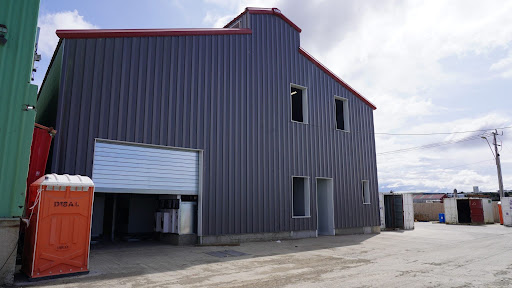The long-term durability of structural steel ensures steel-framed buildings will last as long as the owner desires. In addition, the steel framing system easily adapts to new loading conditions, vertical expansion, and changes in owner requirements, providing for a new life beyond its original design, and further extending its lifespan.
A well-maintained steel structure will maintain its strength and integrity for its lifespan, saving building owners a significant amount of money on repairs due to decay or the impacts of strong winds, fires, or earthquakes. Furthermore, sustainable steel construction will decrease natural resource consumption, construction waste, and greenhouse gas emissions, all vital to preserving our environment.
Sustainable, Long-Lasting Allied Steel Buildings
Choosing long-lasting and durable Allied Steel Buildings to construct steel warehouses, breweries, gyms, garages, churches, and more will create structures with superior resistance to deterioration and damage from natural disasters, ensuring long lifespans, saving building owners money, and protecting the environment.
Steel Building Life Expectancy
When correctly built and maintained, the life expectancy of a steel building can exceed 100 years. Steel buildings last longer than concrete or wood because durable steel better resists common causes of deterioration (mold, termites, moisture) and more effectively stands up to natural disasters than wood and concrete buildings.
What Makes Steel Buildings Last?
Durable and dimensionally-stable steel buildings last a long time because they resist corrosion, moisture, and pests. Steel buildings’ comprehensive and tensile strength protects them from seismic forces, severe winds, and heavy snow or rain. Non-combustible steel can withstand fires and limit the spread of flames.
Corrosion-Resistant Steel Buildings
Constructing a corrosive-resistant steel building involves applying a barrier coating (like paint or galvanized) to stop contact with water and oxygen, both needed to corrode the steel. The 2021 IBC (2203.1) mandates that the design of steel structures include protection against corrosion in cases where corrosion can impair the steel’s strength or serviceability.
Corrosion Problems with Wood and Concrete Construction
Wet wood will corrode the metal nails or screws that fasten it, particularly if the moisture content exceeds 18 percent. The resulting rust will deteriorate the adjacent wood, causing it to lose tensile strength, making the structure less resistant to strong winds and seismic forces.
A leading cause of deterioration in concrete comes from corrosion of the reinforced steel and other embedded metal meant to strengthen the concrete. Of concern, rusting steel expands to a greater volume than steel, creating tensile stresses (expansions) in the concrete and eventual cracking and delamination.
Moisture-Resistant Steel Buildings
Dimensionally-stable steel construction does not expand or contract with moisture content, so it will not warp, crack, split, or creep, remaining sturdy and straight for its lifetime. Moreover, the isotropic nature of steel provides dimensional properties in all directions, giving steel the same strength side to side, up and down, in all loading directions.
Durable, inorganic steel also eliminates or significantly lessens moisture-related issues such as rot and mold that can diminish the integrity of a structure.
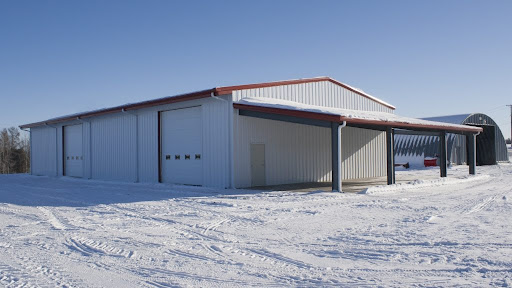
Dimensionally Unstable and Mold-Prone Wood
Moisture, as it dries out, can cause wood to shrink, leading to long-term problems with the building envelope, increasing both energy and maintenance costs to repair cracks in framing and finishes, as well as painting, caulking, sealing, and termite protection.
Moisture Problems with Concrete Construction
Structural breaks in a concrete wall (often due to poor workmanship) will compromise the building envelope by allowing moisture to infiltrate the wall system. Water can also intrude through vapor condensation if the structure lacks proper drainage. Of concern, excess moisture in masonry will exert outward pressure, causing the surface to pop out, flake, or peel (spalling). Eventually, spalling can lead to significant sections of the masonry falling off and crumbling, leading to expensive structural damage.
Moisture accumulation in concrete and wood walls can also lead to unhealthy and damaging wall rot.
Pest-Resistant Steel Buildings
Pest-resistant steel buildings avoid the risk of damaging termites, saving on costly repairs and maintenance compared to wood-framed structures. The International Residential Code recognizes cold-formed steel (CFS) as a method for compliance with the termite-resistant construction requirements.
Wood-Damaging Termites
Of concern, every year, wood-eating termites cause more than $5 billion in damage to structures in the U.S., significantly compromising the integrity and lifespan of the buildings. Importantly, protecting a wood-stud building from termites requires regular, costly inspections and maintenance from a qualified professional with specialized equipment.
Superior Comprehensive and Tensile Strength of Steel Buildings
Steel has exceptional comprehensive and tensile strength and ductility (ability to bend without breaking), along with solid design and engineering, protect the buildings against severe winds and earthquakes, ensuring a long lifespan.
What Makes Steel Strong?
Alloyed metals, like steel, have the combined strength of all the materials used to create them: exceptionally strong iron and carbon, along with manganese, silicon, phosphorus, sulfur, and oxygen. In addition, the smelting process of heating the metal in the bonding process further increases the steel’s strength.
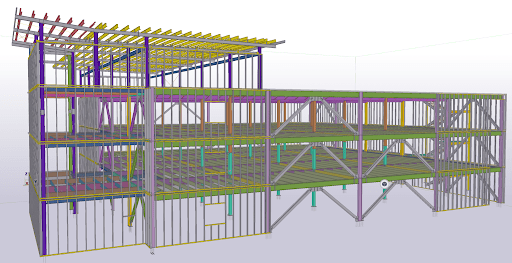
Costly Disaster-Resistant Wood Buildings
Building a wind-resistant wood-frame structure must include a continuous load path from the roof to the ground. It also must resist flying debris during heavy winds. Building disaster-resistant wood structures cost 25–30 percent more than standard wood-frame construction.
Low Tensile Strength of Concrete
Concrete made from sand, cement, gravel, and water obtains a high compressive strength but lacks the tensile strength (the ability to stretch without breaking) to protect against seismic forces. To increase its tensile strength and ductility, builders must reinforce the concrete with steel rebar.
Fire-Resistant Steel
When attacked by fire, steel buildings help slow the spread of fire, saving lives and allowing more time for emergency vehicles to arrive and begin their jobs. Combustible wood, however, will more quickly spread flames during a fire, putting the occupants and building at greater risk of injury than a more fire-resistant steel building.
Steel Building Maintenance Tips
Routinely maintaining and inspecting a steel building will lessen repair costs, ensure exceptional performance, and increase the structure’s lifespan. However, regular maintenance varies widely depending on the building design and the steel’s exposure to outdoor elements.
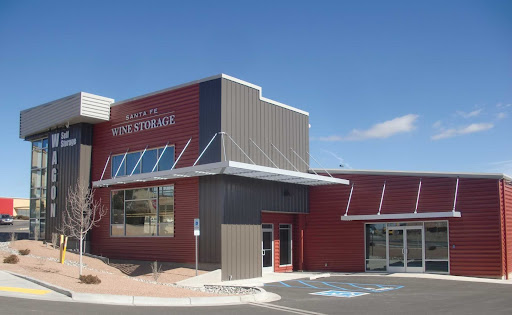
Allied Steel’s 8 Tips for Maintaining a Steel Building
1. Trim Trees and Hedges Surrounding a Steel Building
Landscaping touching a steel building obstructs the airflow, and prevents water from evaporating away from the building, which can lead to damaging and unhealthy mold. In addition, hedges around a steel structure exert pressure on the building’s side, stressing the foundation and the position of the walls.
Hedges closer than a foot from a steel building will exert pressure on the side of the building, stressing the foundation and the positioning of the walls.
2. Check Building Site, Including Roof
The long-term integrity of your steel building depends on removing all objects touching its exterior (walls and roof), including tools, roof panels, metal shavings. These objects add unneeded weight to the building and conceal its surface, allowing for moisture accumulation, and in turn, leading to rust.
3. Check For Holes in the Walls that Expose Insulation
Holes in the walls allow harmful pests and outside air to infiltrate steel buildings. Of concern, unwanted air contains moisture that will accumulate in the insulation, leading to structurally damaging mold and rust, possibly requiring complete replacement of the wall.
4. Regular Washing Will Extend a Steel Building’s Lifespan
Grime and dirt will tarnish the surface of a steel building, possibly leading to mold and rust. To maintain the building’s integrity, regularly inspect it for discolorations, residue, or mud, routinely washing the entire steel building, inside and out, twice a year.
5. Inspect Doors, Windows, and Garage Doors
Check the seals around the doors, windows, and garage doors for leaks and signs of mold, sealing and repairing if needed, and cleaning away the mold.
You must also inspect the garage door’s cables, rollers, auto-reverse safety, tracks, and overall garage door cleanliness since a malfunction of any of these components can put a steel building at risk of exposure to water.
6. Paint Over Scratches and Minor Abrasions
Leaving metal substrate exposed to air exposes it to moisture, which leads to rust and mold. Routinely inspect a steel building for scratches, applying primers and paint (with the right environmental exposure threshold) to the areas.
7. Check and Clean Gutters and Drains
Water will overflow if the gutters and drain become clogged with dirt, sticks, and other debris, leading to mold and rust. It is important to routinely check the gutters and drains of a steel commercial building at least two times a year.
8. Quickly Remove Snow from the Roof
Snow exerts tremendous stress on a steel building, causing it to buckle, particularly if the snow on the roof exceeds the building’s maximum allowable amount. Removing snow from the roof can be dangerous, and is best done by a professional.
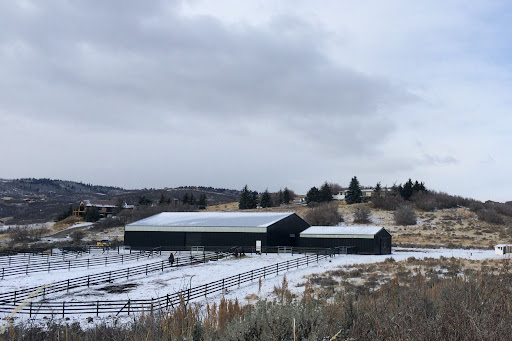
Why Choose Long-Lasting Allied Steel Buildings?
Durable, disaster-resistant, and recyclable Allied Steel Buildings provide an excellent sustainable solution to constructing long-lasting commercial buildings, saving building owners money and time on repairs and rebuilding. In addition, Allied Steel Buildings help minimize the commercial building industry’s impact on natural resources, improving the overall well-being of our communities.
If properly maintained, the design flexibility of Allied Steel Buildings ensures long metal building life expectancy, minimizing de-constructability, construction waste, resource use, and greenhouse gases.
For more on how long steel buildings last, and the importance of constructing durable and sustainable buildings, please get in touch with the professionals at Allied Steel Buildings!

